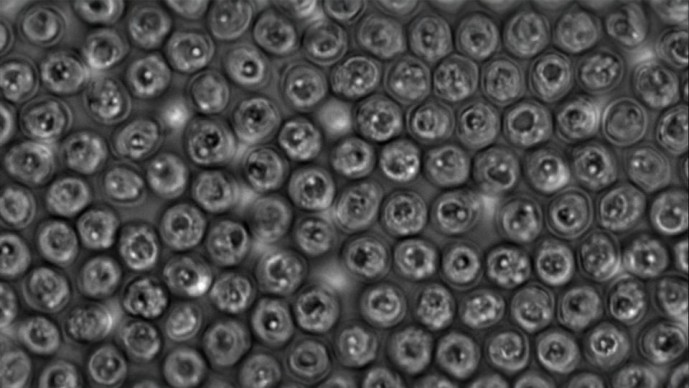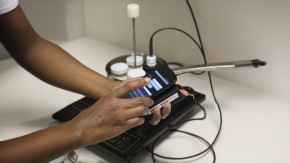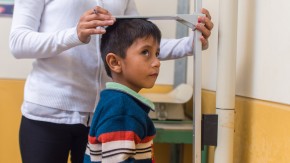Innovation: Building New Infrastructure to Fight Neglected Diseases
- Trevor Mundel, Jul 18, 2017

It's hard enough for scientists to develop diagnostics, drugs, and vaccines when they have encyclopedic knowledge about the organism they're fighting. So think of how much harder it would be if scientists knew very little about an organism - and faced tough challenges to learning more? That's the position researchers face when it comes to the parasite Cryptosporidium - commonly known as "crypto" - a major cause of severe diarrhea among children. But Boris Striepen of the University of Georgia is helping to fill the knowledge gaps.
Diarrhea has long been a leading cause of death in young children in low- and middle-income countries, but it's not a side effect of any single disease. Multiple pathogens can be at the root of a diarrhea case, and we don't know a lot about their relative impact. Crypto generally causes a mild self-limiting diarrhea in healthy individuals, but it can be much more severe - even deadly - in malnourished kids and people living with HIV. In 2013, the Global Enteric Multisite Study (or GEMS - the largest, most comprehensive study of childhood diarrheal disease ever conducted in developing countries - revealed that crypto caused many more cases of severe diarrhea than scientists had previously assumed. So if the global health community wanted to keep bringing diarrhea-related deaths down, it would have to start fighting crypto with new resolve.
Researchers got to work right away, but since crypto hadn't received much attention for decades, there wasn't a lot of work to build on. And the challenges of working with the crypto parasite made traditional methods of drug discovery nearly impossible. It can't be frozen, so you can't store it. It can't be cultured, so you must supply your lab from one of a handful of organizations that routinely extract it from cow and pig feces under incredibly complicated circumstances - which also means that the parasite strains available to labs only reflect a small fraction of the genetically diverse array of parasites that are killing children.
And, as with most intestinal parasites, there's no way to find out how crypto operates in, say, a mouse, without dissecting it - which means you have no chance to see where and how the parasite does damage as it moves through the body over time. Striepen is tackling this last problem by adding a new method to the toolbox available to researchers: he makes crypto glow.
Using the recently developed gene editing technique CRISPR/Cas9, Striepen starts with regular Cryptosporidium and adds an enzyme called luciferase that literally makes crypto glow when it's exposed to certain chemicals. Then, every 12 hours or so, he injects crypto-infected mice with these chemicals and takes pictures of the parasite as it passes through their intestines. That way, he can see where the parasite goes, how long it lingers, and what it does while it's there (though he can't actually see it glowing with the naked eye - he uses what's known as in vivo imaging, a system of incredibly sensitive cameras that detect light coming through the skin). That's helpful for researchers who want to learn more about the basic science of crypto. More importantly, it lets them see how chemical compounds that could become drugs affect the parasite. There's finally a reasonable, quick way to test drug candidates to fight crypto: measuring the intensity of the glow after the bacteria is exposed to them.
Luciferase isn't the only way that CRISPR/Cas9 is being used to advance drug discovery against crypto. These genetic tools can also help researchers identify what are known as drug targets within the parasite - genes that are worth trying to attack because the parasite depends on them to divide and cause disease. If a crypto parasite that's had a specific gene knocked out is far less able to replicate, that's a pretty good sign that hitting that same target with a drug could be a good way to go.
Knockouts can also be used the other way around - to help verify the targets being hit by chemical compounds that kill the parasite. In other words, Striepen's tools also can be used to learn more about how a drug that happens to work actually works.
In some cases, it's not possible to fully knock out a gene, because doing so would compromise the organism so it won't grow (not necessarily a bad thing!). Striepen has also developed a method by which he can engineer the parasite to express a specific "tag" on the end of its proteins that causes them to break down when exposed to a plant hormone called auxin. It's like having a genetic volume dial instead of just an on/off switch. As with knockouts, this method helps researchers verify targets: the parasite should become even more sensitive to drugs that target that specific protein when there's less of the protein around. All this information linking compounds to drug targets helps researchers fine tune drug candidates and pinpoint areas for further research.
The tools Striepen is inventing don't solve every problem confronting crypto researchers. The parasite still can't be frozen or grown in a lab (though the foundation is funding other researchers who are tackling these challenges). There are also two different kinds of crypto, and so far, Striepen's method only works on the type that affects far fewer people. But adding luciferase-expressing parasites and other genetic manipulation methods to the crypto toolbox means that the other challenges facing crypto researchers aren't as intractable a problem. As a result, scientists are already looking for drug candidates, and the work is slightly ahead of schedule; they hope to have a few candidates identified for clinical testing by the end of 2018.
Even with the best tools in the world, drug discovery is incredibly difficult. But for many neglected diseases, we still lack even basic tools. In the case of crypto, we didn't know it was a big problem until four years ago. And once we knew how serious the problem was, we still didn't have the means to come up with solutions. A lot of the research we're doing in global health is to create new tools and technologies that make it possible to get on with the hard work of drug and vaccine development. This is what makes the work on this project so interesting: it opens up completely new ways of exploring crypto - and it could accelerate the discovery of new treatments by years.



